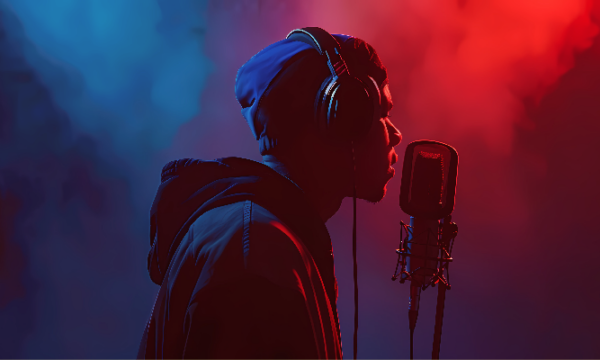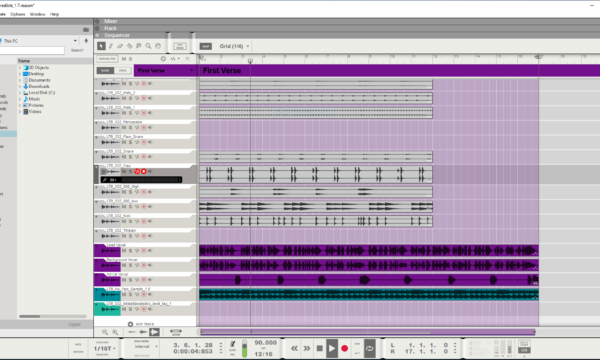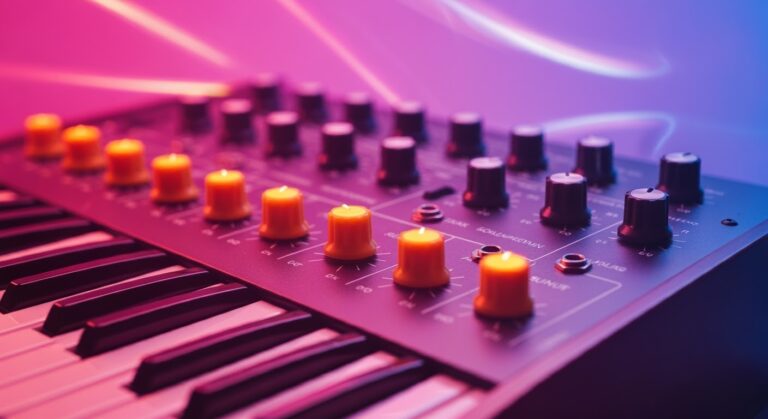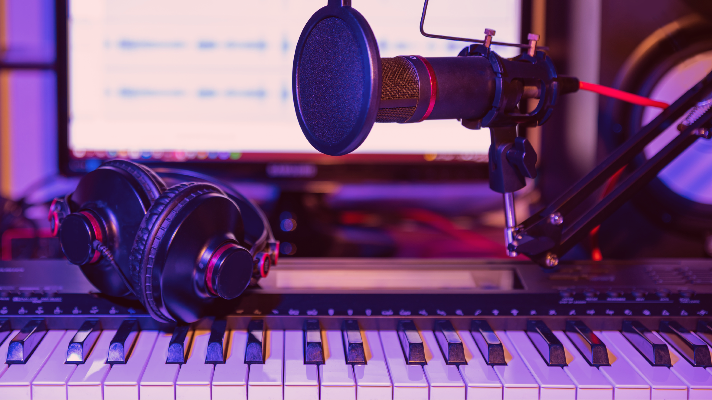Recording Vocals: One Take vs. Punching In
When it comes to recording vocals, many artists face the question of whether to aim for a full take or break the process down into segments with a technique called “punching in.” Both approaches have their pros and cons, and the decision largely depends on your style, comfort, and the specific needs of your track.
In this post, we’ll break down both methods and discuss which one might be right for you.
What Is Recording in One Take?
Recording in one take refers to laying down the entire vocal performance in a single, uninterrupted pass. This approach is common among experienced vocalists who can maintain their energy, consistency, and emotion throughout the entire verse and sometimes song.
Advantages of One Take
- Natural Flow and Emotion
Recording in one take captures the entire emotional arc of the song. Your voice remains consistent, and there’s a natural progression in how you deliver each section, making it sound authentic and cohesive. This is especially useful for songs that rely heavily on storytelling or emotional depth. - Efficiency
If you’re confident in your delivery and familiar with the song, doing it all in one take can save time. Instead of stopping and starting, you get through the track in one go, which may result in fewer recording sessions. - Simplicity in Editing
Having one continuous take means fewer edits in post-production. This makes the mixing process more streamlined, as you won’t have to worry about matching different vocal tones or levels from various parts of the song.
Disadvantages of One Take
- Requires High Consistency
Achieving a perfect take can be challenging, especially if the song is long or has complex vocal sections. Any mistake or missed note means starting over, which can be mentally and physically draining. - Voice Fatigue
Recording multiple full takes back-to-back can wear out your voice. If you’re pushing yourself to nail everything in one shot, you may end up sacrificing vocal quality as your voice tires.
What Is Punching In?
Punching in refers to the practice of recording individual sections or phrases of a song, usually after stopping the recording to focus on specific areas that need work. This method is common when an artist wants to achieve perfection in smaller segments rather than worrying about the entire take.
Advantages of Punching In
- Focus on Perfection
Punching in allows you to concentrate on specific lines or phrases that might be difficult to nail in one take. You can re-record just those parts until they sound exactly how you want, reducing the pressure of having to perform perfectly throughout the whole song. - Preserves Energy
Because you’re focusing on smaller sections, you can conserve your vocal strength and energy. This is particularly useful if you have a complex track or multiple songs to record in one session. - Ideal for Complex Tracks
For songs with fast flows, intricate rhymes, or multiple melodies, punching in can give you the flexibility to perfect those tough spots without worrying about other sections of the song.
Disadvantages of Punching In
- Potential for Disjointed Feel
One of the biggest challenges of punching in is maintaining the emotional consistency and flow of the song. If you’re focusing on one part at a time, it can be harder to keep the same level of energy and emotion throughout the track, which might result in a slightly disjointed feel. - More Time in Post-Production
Punching in leads to more individual recordings that need to be stitched together in post-production. Each section will need to be matched in terms of volume, tone, and timing, which can add complexity to the mixing process.
Which Method Is Best for You?
Experience Level
If you’re just starting out, punching in might be a better option because it allows you to focus on getting each part right without the pressure of performing an entire take. More experienced vocalists may prefer recording in one take, especially if they’ve developed stamina and precision over time.
Song Structure and Genre
The genre and structure of the song also play a role in your decision. If you’re working on a high-energy track with fast flows or intricate rhymes (as is common in rap and trap music), punching in might be the way to go. On the other hand, if your song leans more toward emotional storytelling, doing it all in one take might better capture the song’s natural progression.
Time Constraints
If you’re on a tight schedule and need to get through the recording process quickly, one take can be more efficient. However, if you’re aiming for a highly polished, detailed recording and have more time, punching in might give you the results you want.
Tips for Success with Each Approach
If You Choose One Take
- Warm-Up Properly
Ensure your voice is warmed up to avoid straining during long takes. - Pace Yourself
Even if you feel the pressure to get the perfect take, it’s okay to take breaks between takes to let your voice recover. - Embrace Imperfections
Don’t be afraid to let a little rawness or imperfection through. It can add character and authenticity to the final product.
If You Choose Punching In
- Stay Consistent
Be mindful of maintaining the same vocal tone and emotion across each section. Even though you’re breaking it up, the final product should feel like one cohesive take. - Mark Your Sections
Pre-plan which sections you’ll record and focus on each one individually. This will keep the process organized and smooth. - Trust Your Engineer
Punching in requires more detailed editing, so it’s essential to work closely with your audio engineer to ensure the transitions between takes are seamless.
Final Thoughts
Ultimately, there’s no right or wrong answer when it comes to choosing between recording vocals in one take or by punching in. It all depends on your comfort level, the demands of the track, and what you’re trying to achieve. By understanding the strengths and weaknesses of each method, you’ll be better equipped to make the choice that’s right for your music.
Justin David
Creative man • Philosopher • Artist • Producer





